Physics Demonstrations with Jordan
June 24-25, 2019
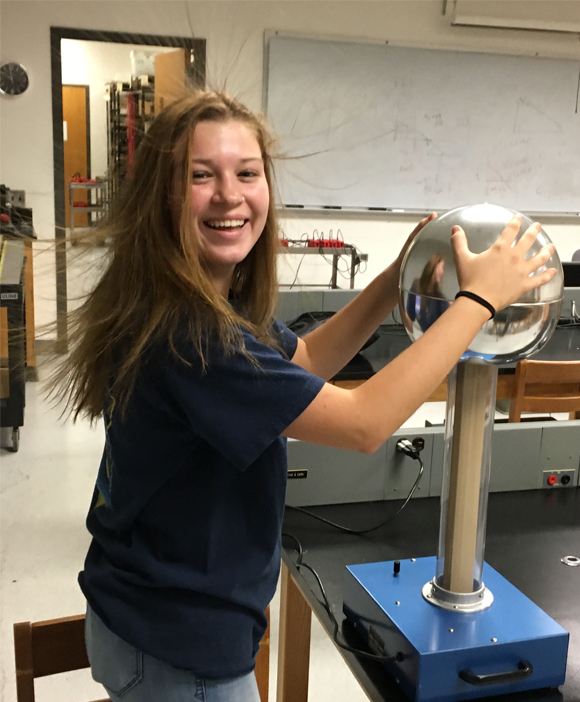 | van de Graaf Generator A long-time favorite physics demonstration is the van de Graaf generator, which is capable of producing hundreds of thousands of volts. It is capable of only very low currents, so it can produce spectacular sparks without being a dangerous shock hazard.
A basic physics principle demonstrated here is that like charges repel each other. That repulsion spreads out the charge on the metal dome, but it can get further apart by transferring to Jordan's hair. The individual hairs will then repel each other because they have the same charge. |
A spherical metal shell is brought close to the van de Graaf generator, and a spark about 10cm long jumps to that sphere. The voltage required to produce an electric arc across a centimeter of air is in the neighborhood of 30,000 volts, so this arc may represent about 300,000 volts produced by the van de Graaf. | 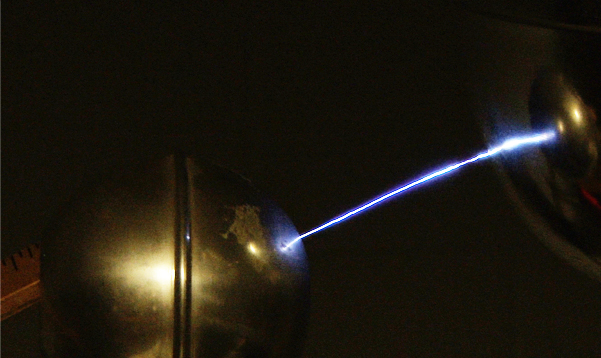 |
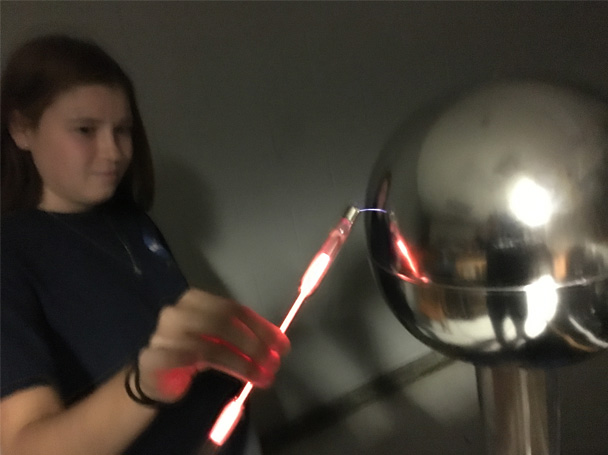 | The van de Graaf can also be used to excite spectral tubes with specific gases in them and will display the characteristic colors for those gases. This gas is neon, and if the colors were separated by a diffraction grating, they would show the spectrum for neon gas.

|
A cereal like puffed wheat or Cheerios provides a playful example of the mutual repulsion of objects that are given an electric charge of the same polarity. |  |
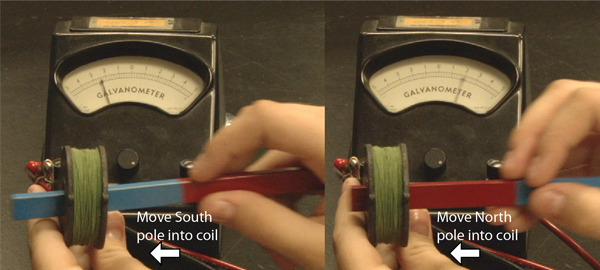 | Moving a magnet into a coil of wire will generate a voltage in that coil according to Faraday's Law. The magnitude of the voltage is proportional to the rate of change of magnetic flux in the coil, so that moving the magnet in faster will produce a greater voltage. The polarity of the voltage is such that it opposes the change that produces it, so pulling the magnet out will produce a voltage of the opposite polarity. |
A copper rod is placed in the magnetic field of a permanent magnet. If a battery is used to drive an electric current through the rod, it will experience a force perpendicular to the magnetic field in the direction given by the right-hand rule. | 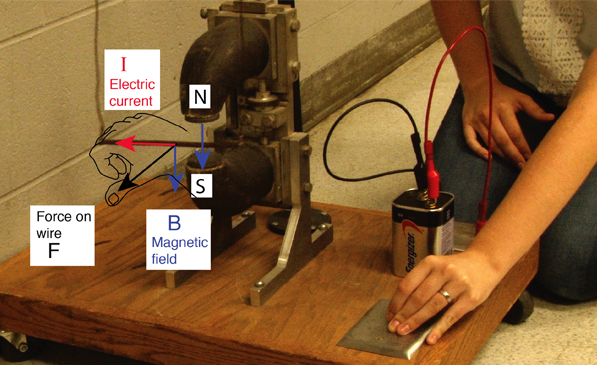 |
 | When ordinary AC voltage is applied to a large coil of wire with an iron core, a strong alternating magnetic field is produced. If an aluminum ring is placed over the core and 120 volts AC is connected, a large current is induced in the ring and it is tossed into the air. |
A large coil of wire with an iron core can produce a large alternating magnetic field in the air, particularly around the iron core. This alternating magnetic field is sufficient to light a lightbulb attached to another coil of wire when that alternating magnetic field is allowed to pass through the coil. This is another example of Faraday's law and includes the principles used in transformers. | 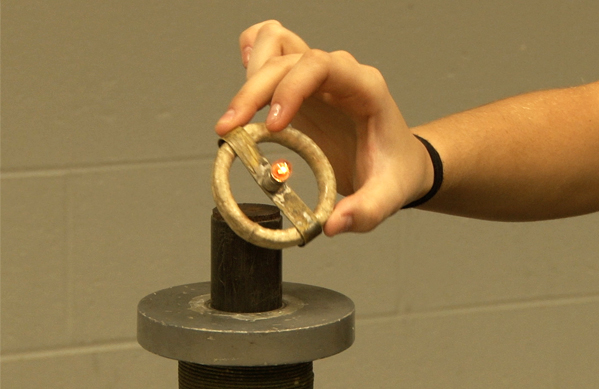 |
| Another way to demonstrate conservation of momentum is to spin a wheel and hold it on the rotatable stool. If you turn the wheel over to change its direction of angular momentum, then the stool counter-rotates to keep the vector angular momentum the same. | 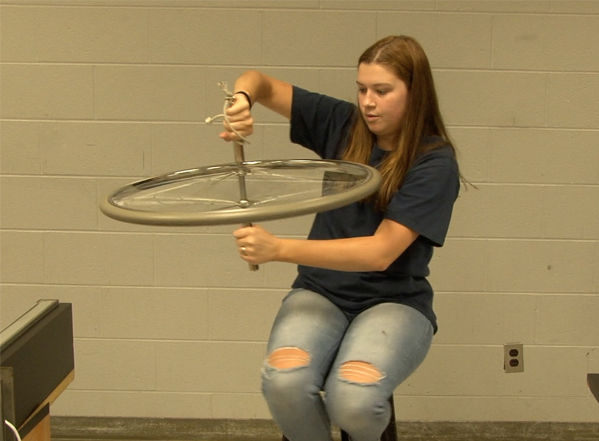 |
 | If a spinning wheel is supported on an axis point so that there is a net torque on it, the torque will change the angular momentum in a manner which is called "precession". |
A slinky is a good tool for the demonstration of wave phenomena. Here it is used to show a pulse of a longitudinal wave. | 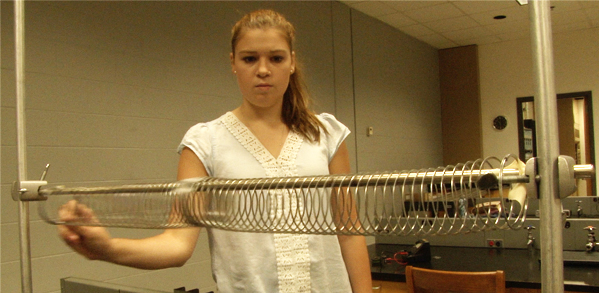 |
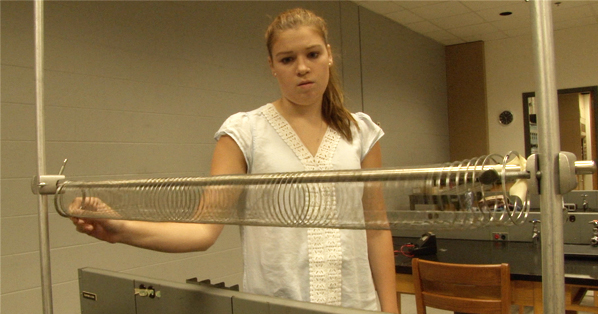 | The slinky with one end fixed can be used to show longitudinal standing waves analogous to those of a closed air column, demonstrating odd harmonics. |
With both ends free to move, the slinky can be used to show standing wave modes analogous to and open air column, like a flute. The fundamental mode has a node in the center, which can be seen clearly with the slinky. |  |
 | If placed on a table with one end fixed, the slinky can also be used to demonstrate transverse waves and transverse standing waves. The first four standing wave modes are shown. |
Another useful visualization with the slinky is the fact that a traveling wave will reverse in phase upon encountering a fixed end. An incoming right pulse will reflect as a left pulse. There are analogies with light and other waves upon encountering reflecting interfaces. |  |
|
Index
2019 |

















